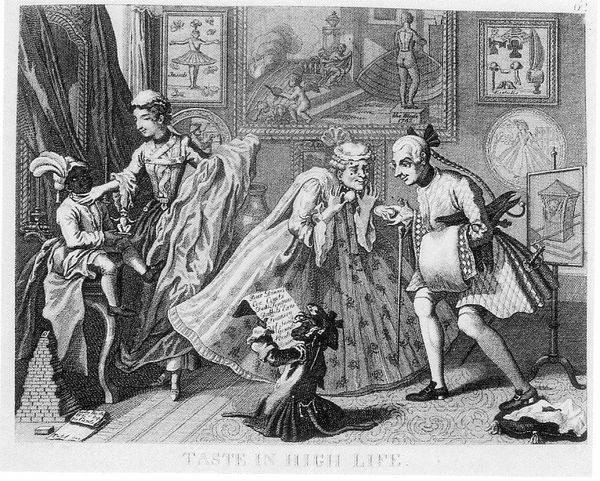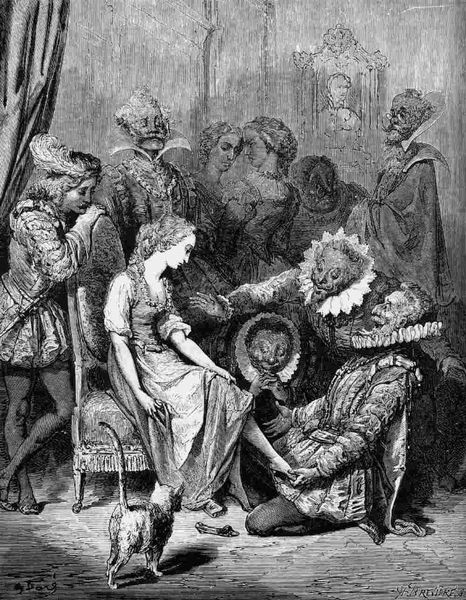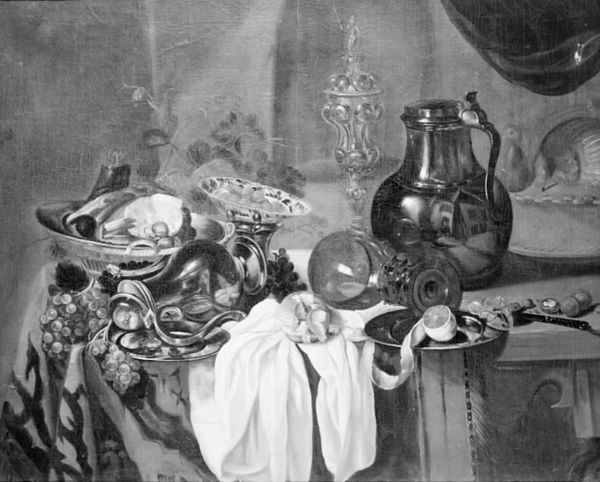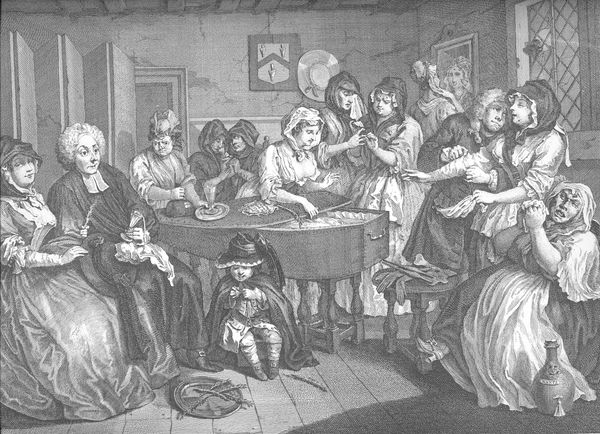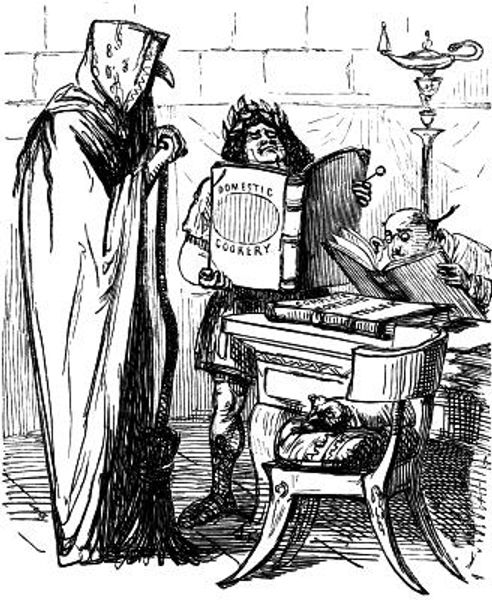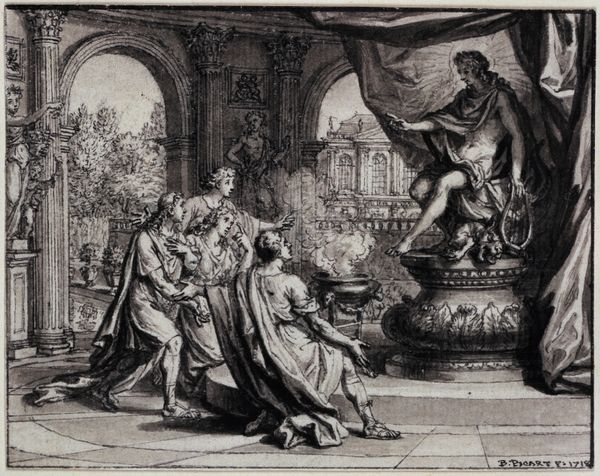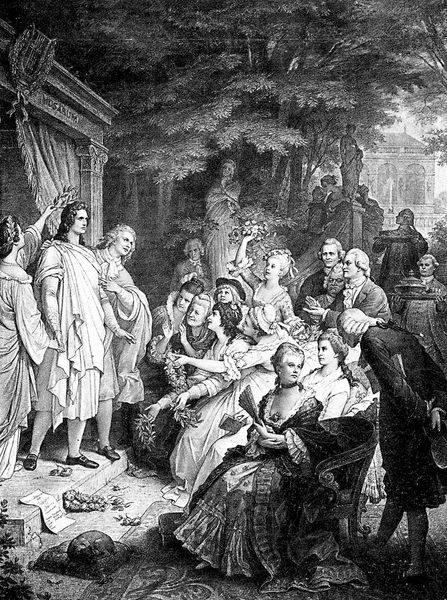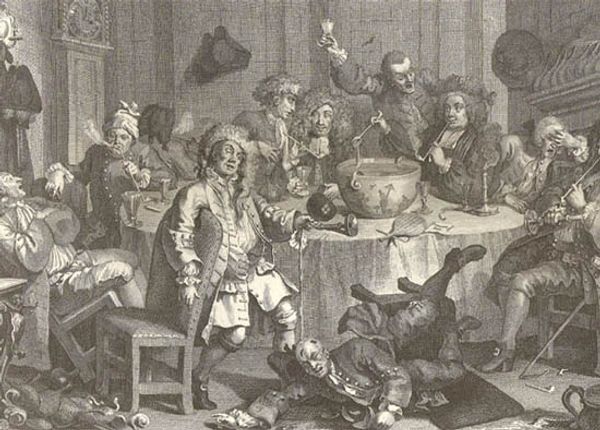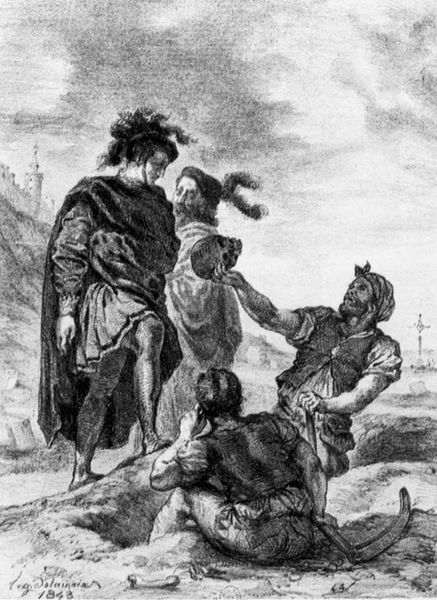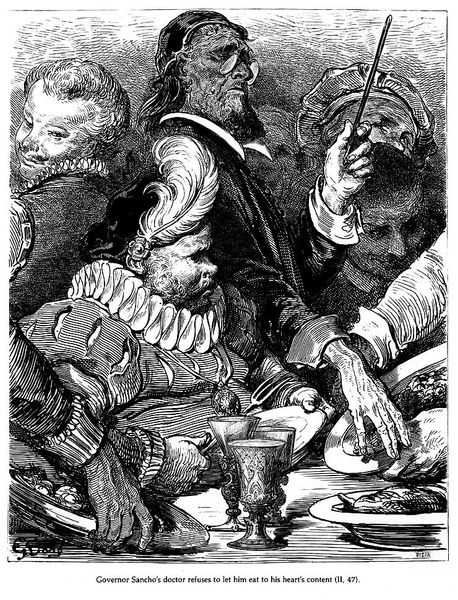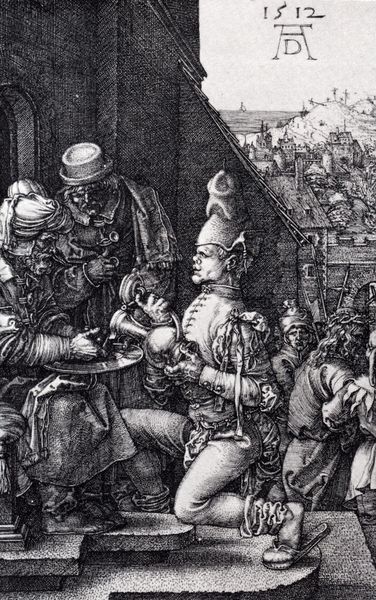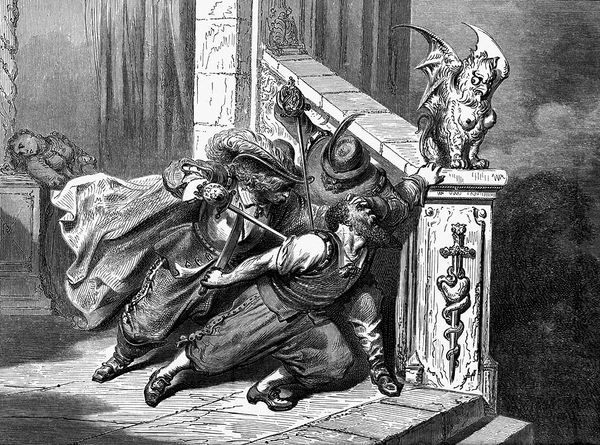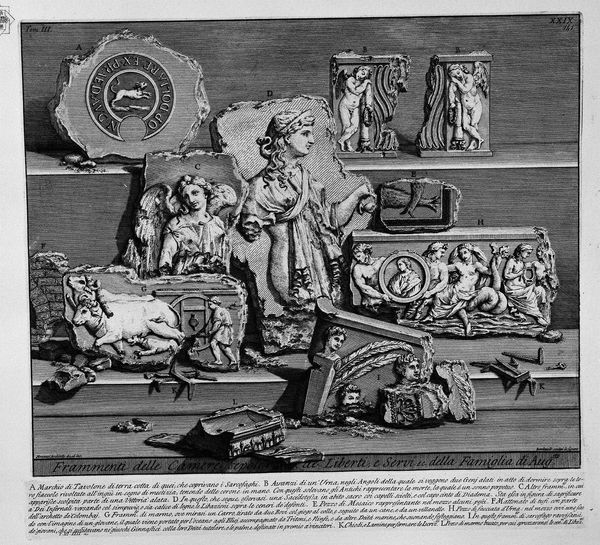
drawing, print, ink
#
drawing
#
allegory
#
narrative-art
# print
#
fantasy-art
#
figuration
#
charcoal art
#
ink
#
romanticism
#
line
#
history-painting
Copyright: Public domain
Gustave Doré made this print using wood engraving techniques in 19th century France. It depicts a scene of an ogre receiving a guest as civilly as he can. Prints like this one were usually made for book illustration and wider distribution through a rapidly expanding publishing industry. Wood engraving was a means of democratizing images in this period, but we should also consider the politics of imagery that went with it. What does it mean to show an ogre in a ‘civil’ way? Here Doré shows the trappings of wealth in a bourgeois household, but makes it grotesque. The food is unsettling. We might think about the rise of realism in the mid-19th century and wonder if Doré is critiquing the values of the middle classes. To study this further, we would need to delve into 19th-century French history books and art criticism. It's clear that art doesn't exist in a vacuum and that a complex web of cultural and economic conditions shape its creation and interpretation.
Comments
No comments
Be the first to comment and join the conversation on the ultimate creative platform.
